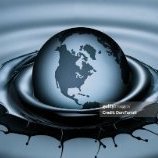Smoke, Smog, Dust 2014 Chiang Mai
-
Recently Browsing 0 members
- No registered users viewing this page.
-
Topics
-
-
Popular Contributors
-
-
Latest posts...
-
10
Russia nearing 1 million dead
It is still remarkable that Russia can sustain the equivalent of the worst day in the Vietnam War, everyday, 7 days a week for more than 1,200 days now. Eventually they should bleed out. The deadliest day for the U.S. military during the Vietnam War was January 31, 1968, at the start of the Tet Offensive, with 246 American soldiers killed. -
12
Report Bangkok Tower Collapse Scandal: 70 Officials on the Hook
Yes.....but they all died !!! -
-
4
Report Thai Woman Finds Abandoned Box with 12 Million Baht in Condo Waste Area
Only a lawyer could 'forget " 12 million" ! -
8
Dday 6/6/1944
If only. And the only way to prevent wars is to present enough ability to win one that an aggressor chooses to not start one. Sadly in human nature that is currently the only solution. And the only way to present strength is to spend money on war making. Catch 22. -
10
Crime Chonburi Immigration Arrests Russian Man with Interpol Warrant
Conscription is up to age 30...this guy is 33..nice try
-
-
Popular in The Pub







.thumb.jpeg.d2d19a66404642fd9ff62d6262fd153e.jpeg)




Recommended Posts
Create an account or sign in to comment
You need to be a member in order to leave a comment
Create an account
Sign up for a new account in our community. It's easy!
Register a new accountSign in
Already have an account? Sign in here.
Sign In Now